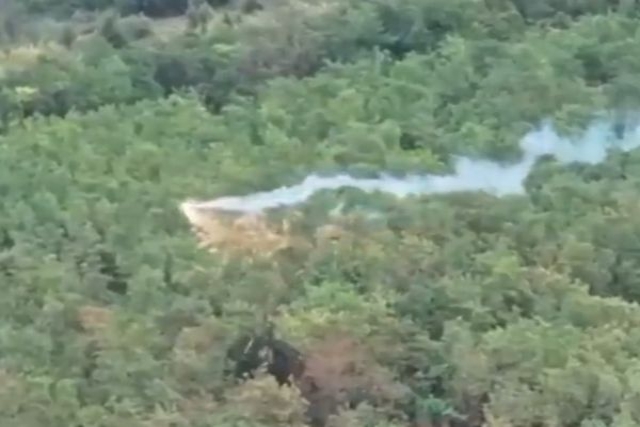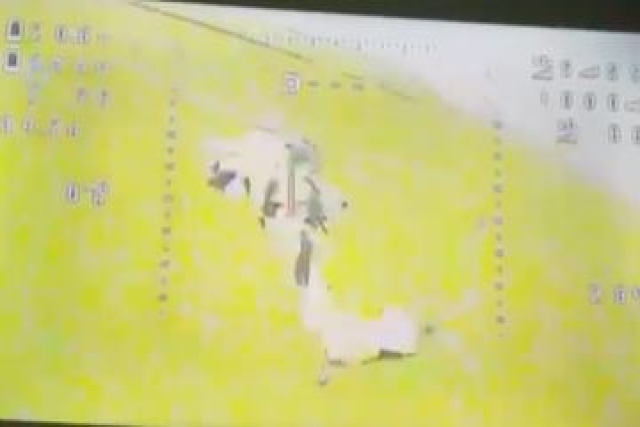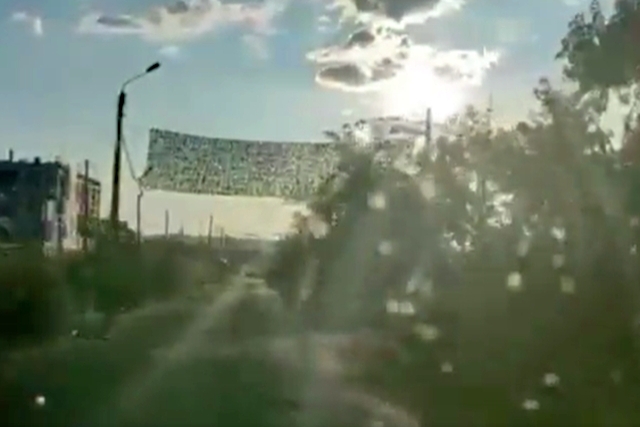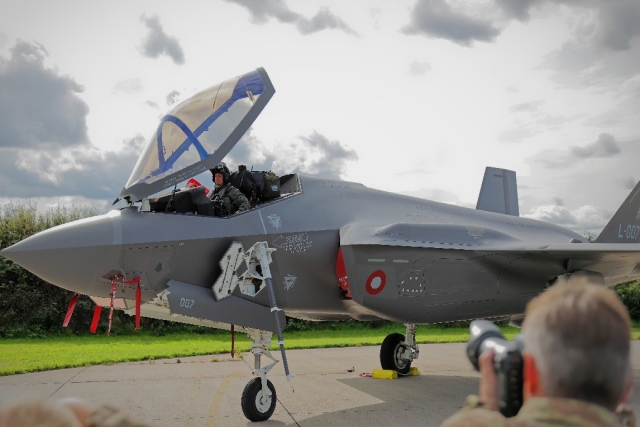Ukrainian FPV Drone Deploys Thermite on Russian-Held Treeline
This marks the first documented instance of thermite being used in a "flamethrower" capacity

A Ukrainian drone, being referred to as 'Dragonfire,' has deployed molten thermite on a Russian-held treeline, setting it ablaze for the second consecutive time.
The incident was first revealed on September 2, when a video surfaced on social media showing the drone releasing a stream of intense, white-hot flames from thermite onto Russian positions.
The following day, Ukraine’s 108th Separate Territorial Defense Brigade shared footage on Telegram, emphasizing the deployment of this new thermite-equipped drone, dubbed "Dragonfire." The timing and location of the footage remain unconfirmed, as well as the identity of the initial source. The video, titled “Drakaris” in reference to the "Game of Thrones" command for dragons to attack, captures the drone setting fire to Russian-held tree lines and fields. While the entire sequence isn't visible, the drone is shown flying along the treeline, spraying fire for 22 seconds before dropping the burning munition, which explodes upon contact with the ground.
Thermite, a mixture of aluminum and iron oxide, burns at temperatures exceeding 2,000 degrees Celsius (3,632 degrees Fahrenheit), which is sufficient to melt through steel and is particularly effective against armored vehicles. The video concludes with the area engulfed in flames after the drone's attack. Thermite is especially dangerous to flammable materials, and given the dry summer, crops and vegetation catch fire easily. The thermite spray ignites numerous small fires, which could potentially merge into larger blazes, forcing occupying troops to abandon their positions.
The drone's method of operation typically involves spreading the thermite reaction along its flight path, leaving behind a trail of molten iron droplets. While the likelihood of causing direct casualties is low, the molten iron can create a "rain" of white-hot droplets. Troops in bunkers, covered trenches, or wearing protective gear are generally shielded from the effects, provided they avoid direct exposure.
Thermite is known for its use in high-temperature incendiary applications, including the demolition of artillery or vehicles by melting critical components. Thermite grenades, when dropped through a hatch, can be particularly effective against Russian tanks, where the intense heat can trigger secondary explosions, leading to the destruction of the vehicle.
Several Ukrainian sources, including Steel Hornets, produce thermite drone bombs, shipping orders directly to drone units. Their product line includes various types of thermite munitions, ranging from small one-pound bombs for quadcopters to larger five-pound bombs that burn for over 22 seconds, similar to the one featured in the video. The thermite mix in this instance may have been modified to create a more effective spray.
The specific drone model used in this operation remains unidentified, though some footage suggests it could be a larger FPV model. The new Queen Hornet, capable of carrying a 20-pound payload, may have been involved in this operation.
This marks the first documented instance of thermite being used in a "flamethrower" capacity, possibly involving a large drone model like the “Baba Yaga.”











